Key takeaways:
- Trading fees can significantly impact overall profitability; understanding various fee structures is essential for informed trading decisions.
- Different types of fees (maker-taker, transaction, maintenance, and withdrawal fees) can quietly erode profit margins over time.
- Comparing platforms based on their fee structures can greatly influence your trading strategy and outcome.
- Implementing strategies like consolidating trades and using limit orders can help minimize trading fees and enhance profitability.
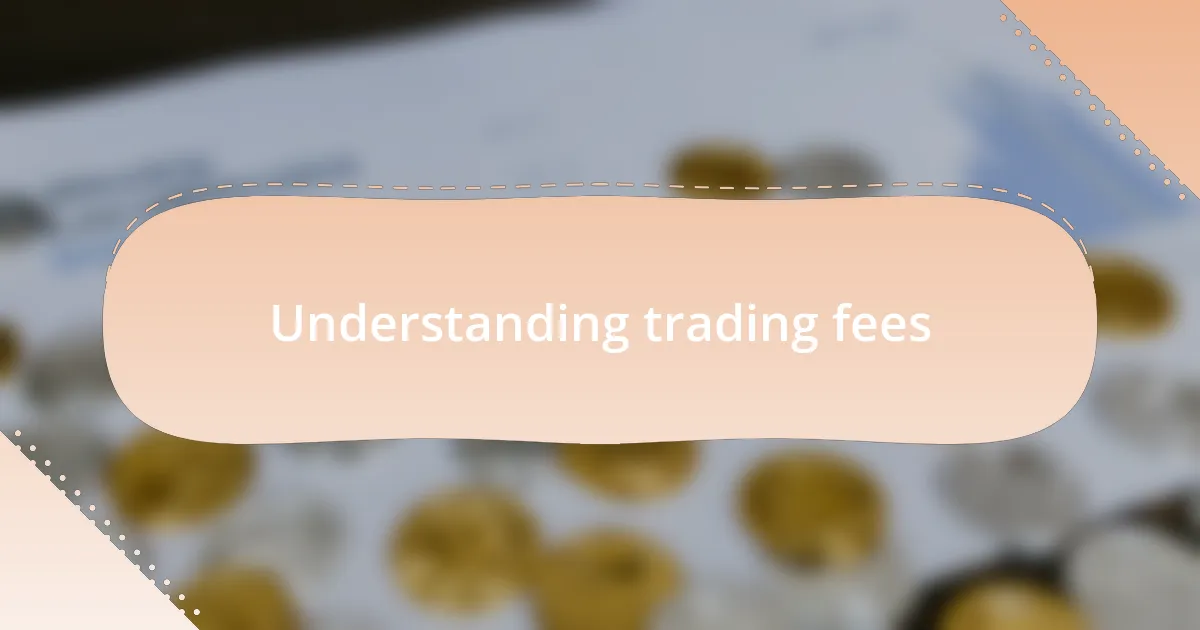
Understanding trading fees
Trading fees can often be a surprising aspect of the cryptocurrency landscape. When I first started trading, I was caught off guard by the percentage deducted from my transactions; it felt like a hidden cost that eroded my gains. Have you ever found yourself wondering just how much these fees can impact your overall profitability?
Different platforms have varied structures for these fees—some charge a flat rate, while others use a tiered system that increases with trading volume. I remember the moment I realized that a seemingly small fee could add up, especially if I was making multiple trades in a day. It’s like that slow leak in a tire; you might not notice it right away, but over time, it can lead to significant loss.
Moreover, there’s often a fine print associated with trading fees that many overlook. I learned the hard way when I didn’t account for withdrawal or deposit fees after making some successful trades; it was a tough pill to swallow! Understanding these nuances is crucial because every cent counts, especially in the highly volatile world of cryptocurrencies. So, take the time to fully investigate the fee structure before diving in; it can make a substantial difference in your trading journey.
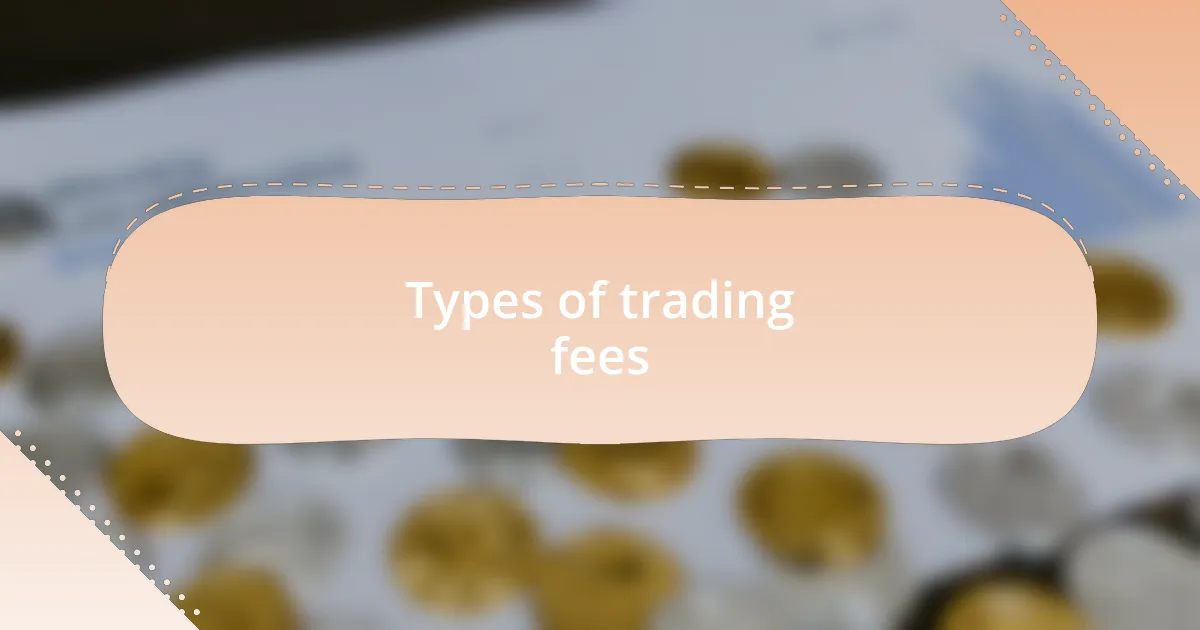
Types of trading fees
Trading fees in the cryptocurrency world come in various forms, and understanding them is essential for any trader. I recall the first time I encountered a maker-taker fee structure. It was confusing at first—the maker fee is charged when you add liquidity to the market, while the taker fee applies when you take liquidity away. Seeing those deductions was a wake-up call for me; the numbers on my screen seemed to vanish faster than I expected.
Transaction fees are another critical aspect I wish I’d understood earlier. These fees are typically assessed for processing trades and can vary significantly from one platform to another. I remember a day when I thought I had struck a great deal on a trade, only to discover that high transaction fees turned my profit into a loss. It’s moments like these that make you realize the importance of scrutinizing the fee details before hitting that “buy” or “sell” button.
Then there are maintenance and account fees that can quietly chip away at your balance over time. When I first started trading, I overlooked these, thinking they’d be negligible. However, after a few months, I was astonished at how they accumulated. Have you ever felt that dreaded sinking feeling after seeing unexpected charges on your account? It’s a pain that can be easily avoided with a little diligence upfront. Understanding these various trading fees can help you make informed decisions as you navigate the exciting but complex world of cryptocurrency trading.
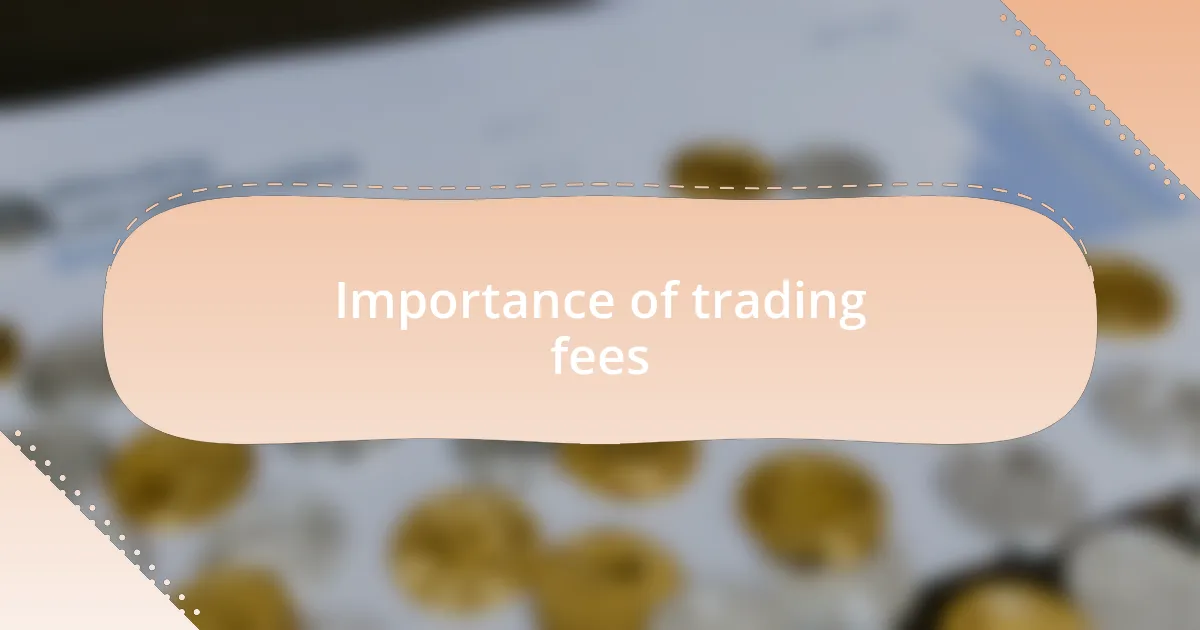
Importance of trading fees
When it comes to trading in cryptocurrencies, understanding trading fees is paramount. I recall a time when I was eager to jump into a new trade without considering the fees involved. That excitement quickly faded when I realized that my profits were significantly reduced by unexpected charges. It felt like I was running a race only to be tripped at the finish line.
I’ve learned that the importance of trading fees goes beyond just the immediate cost; they can dramatically impact your overall trading strategy. For instance, after tracking my transactions for a month, I was shocked to see how fees were eroding my margins. It made me rethink my trading approach entirely. Have you ever stopped to calculate how much those seemingly small fees add up?
By paying attention to trading fees, you equip yourself with vital information that enhances your profitability. The right fee structure can mean the difference between a successful trade and a lost opportunity. I’ve made it a routine to compare platforms and their fee structures before executing a trade, and that has made a world of difference in my trading outcomes. I encourage you to do the same; your future self will thank you.
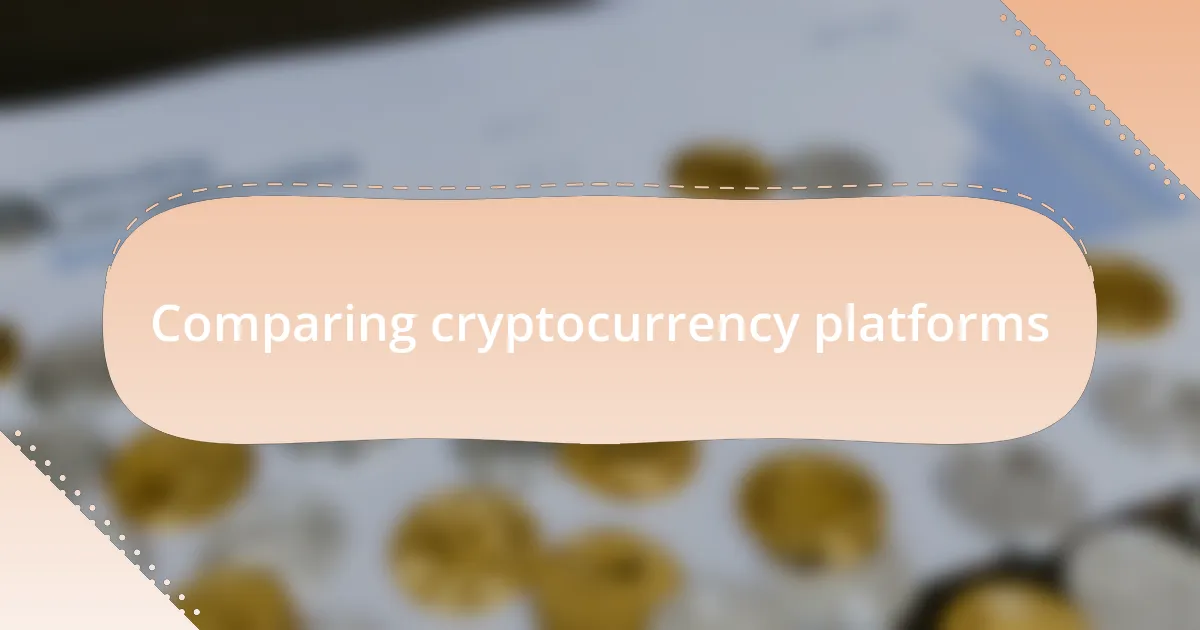
Comparing cryptocurrency platforms
When comparing cryptocurrency platforms, the first aspect I consider is their fee structures. I remember when I switched from one platform to another, thinking the user interface was the only aspect that mattered. However, I quickly found that the new platform had hidden fees that significantly affected my trading volume. Have you ever been surprised to find out about fees that seemed negligible but added up over time?
Another factor is the type of fees charged—transaction fees, withdrawal fees, and even inactivity fees can creep into your profits. I once overlooked an inactivity fee on a platform where I held a small amount of crypto. It was disheartening to realize that my ‘watch-and-wait’ strategy was silently eating away at my funds. It’s essential to do thorough research and read the fine print, don’t you think?
Lastly, the differences in fee structures can influence not just individual trades but your overall trading strategy. For example, I switched to a platform that offered a flat fee instead of a percentage-based fee, which drastically improved my profitability on smaller trades. This shift in strategy taught me that sometimes, it’s not just about the platform’s bells and whistles but how those fees can ultimately shape your trading experience.
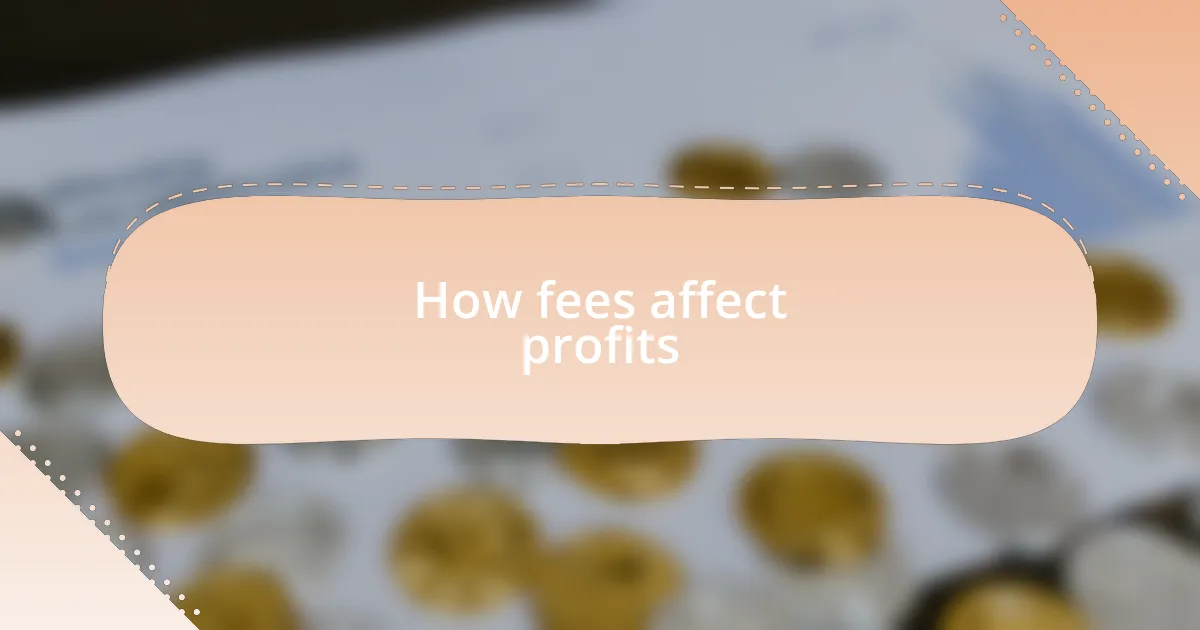
How fees affect profits
Fees can substantially erode your potential profits, often more than you might expect. I recall a time when I made several quick trades, thinking I would capitalize on small price fluctuations. However, the cumulative transaction fees ended up negating any potential gains. It made me wonder: how many times have I let those seemingly small fees dictate my trading success?
The frustration I felt when I discovered a withdrawal fee on funds I had planned to access quickly was eye-opening. It wasn’t just about the dollar amount; it was about the realization that my plans could be delayed due to fees I hadn’t considered. This experience taught me to factor in all possible fees to truly understand how they could affect my bottom line.
Moreover, the timing of your trades in relation to fees can impact overall profitability. I once held back on making a significant purchase because of an anticipated fee hike. That hesitation cost me a favorable entry point, reinforcing how critical it is to align my trading timing with fee structures. Have you thought about how a simple decision regarding fees could alter your trading journey?
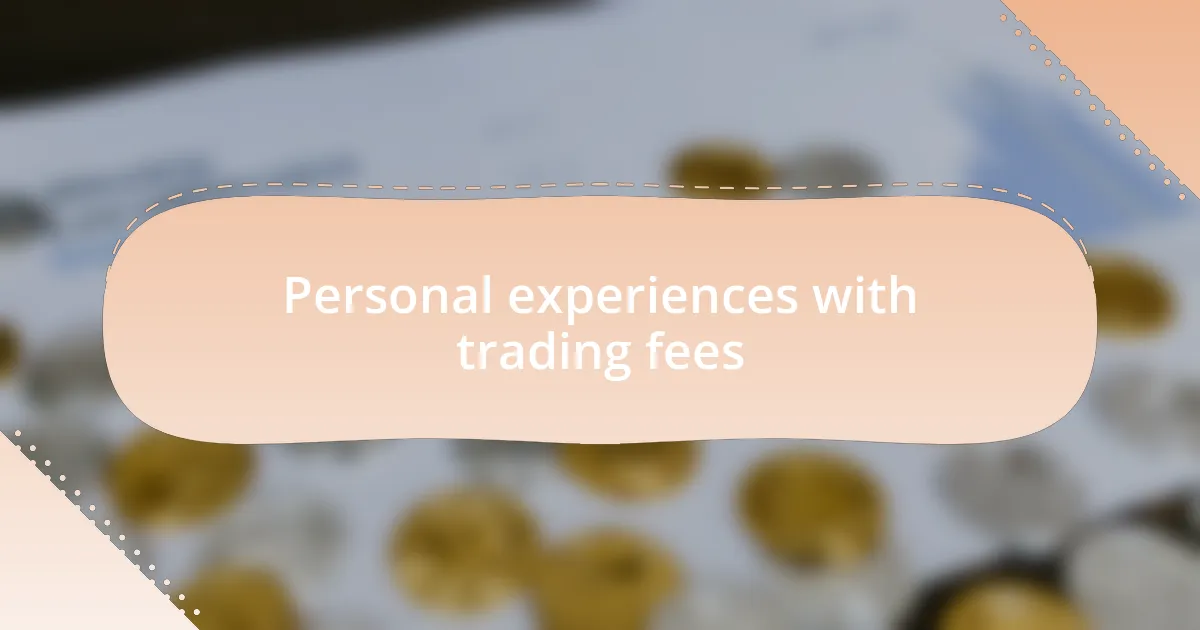
Personal experiences with trading fees
Trading fees can sometimes feel like hidden obstacles, and I learned this the hard way. I remember when I switched to a platform that advertised low trading fees, but once I started trading, I was hit with unexpected withdrawal charges. This experience left me wondering if I had truly accounted for all costs, or if I was simply swayed by the allure of lower trading fees in the marketing materials.
One particularly memorable moment occurred when I made a hasty decision to cash out after a series of trades. The withdrawal fee was significantly higher than I anticipated, which led to a mix of frustration and regret. It dawned on me that if I had taken a moment to analyze the fee structure beforehand, I could’ve made a more informed decision. Have you ever felt that sting when unexpected fees catch you off guard?
I’ve also realized how crucial it is to stay updated on any changes to fee structures on platforms I use. There was a time when I signed up for a flat-rate trading fee service, only to learn that my favorite pairs were suddenly subject to higher fees. This shift made me question whether my chosen platform aligned with my trading strategies. It’s a gentle reminder that staying informed is just as important as the trades we execute.
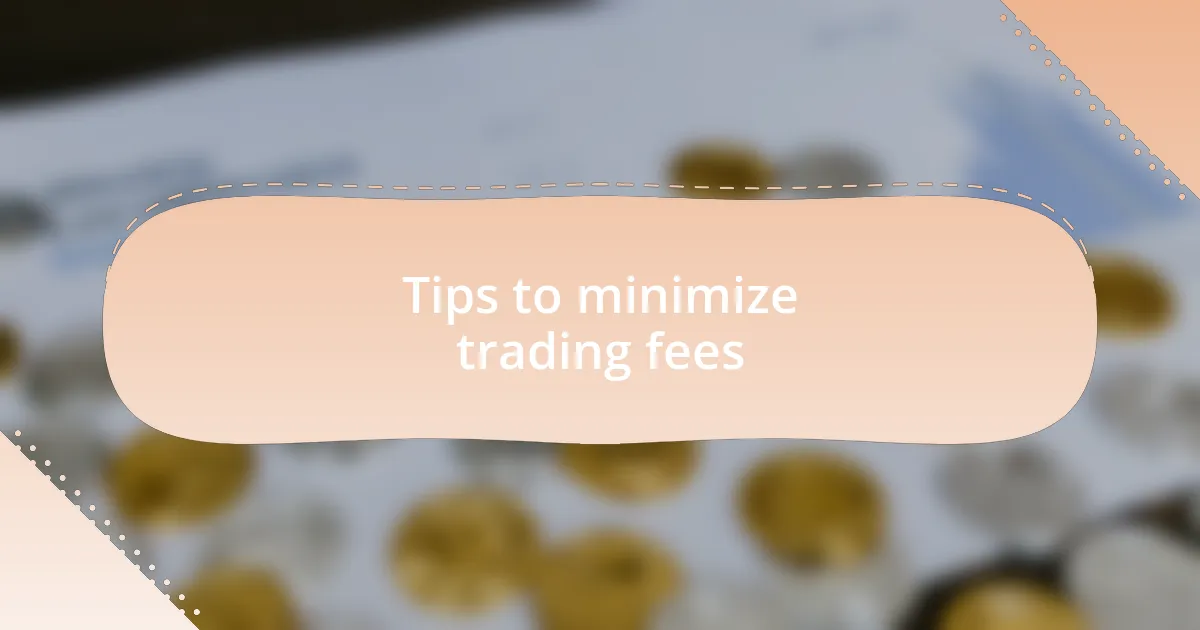
Tips to minimize trading fees
One effective way to minimize trading fees is to choose a platform that offers fee discounts based on trading volume. I once opted to increase my trading activity to hit a higher tier that significantly reduced my costs. It felt rewarding knowing that my efforts directly translated into savings. Have you ever thought about how your trading patterns could be optimized for lower fees?
Another tip is to consolidate your trades into fewer transactions. I remember making numerous small trades, thinking I was being agile, only to realize that each incurred its own fee. By batching my trades, I could have easily reduced my overall costs. Have you considered how diligence in planning your trades could save you money?
Finally, consider using limit orders instead of market orders. There was a time when I rushed into market orders, unaware that it could often come with higher fees. Once I shifted to limit orders, not only did I save on fees, but I also gained better control over my entry points. Are you maximizing your trade execution strategy for cost efficiency?